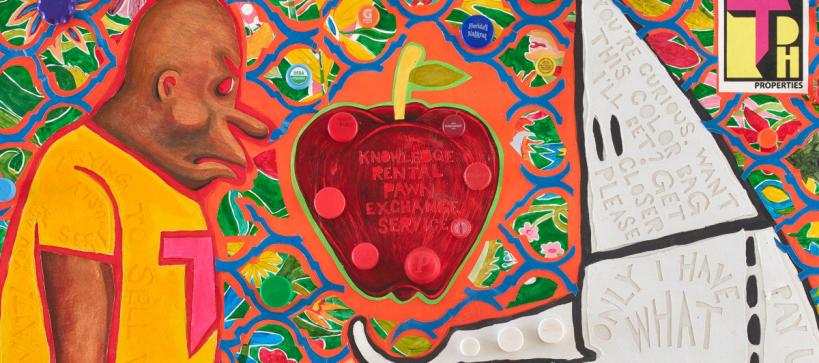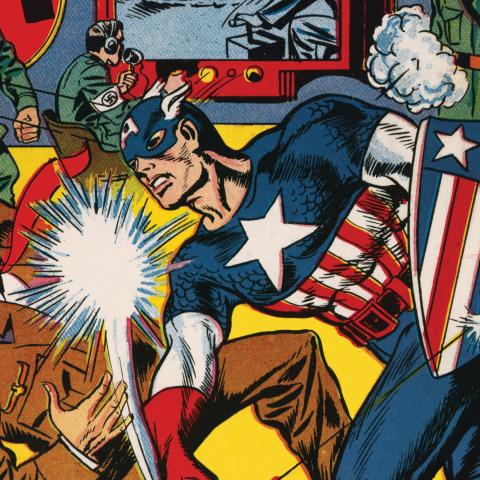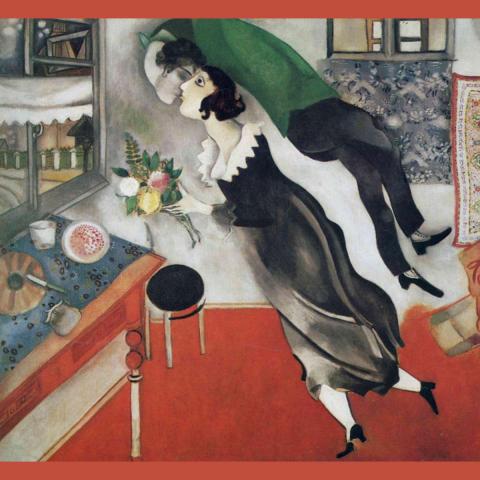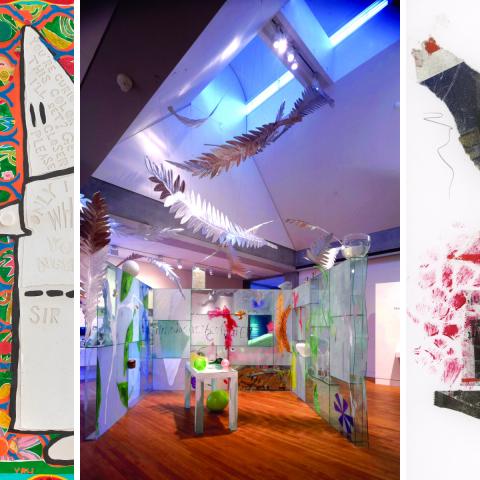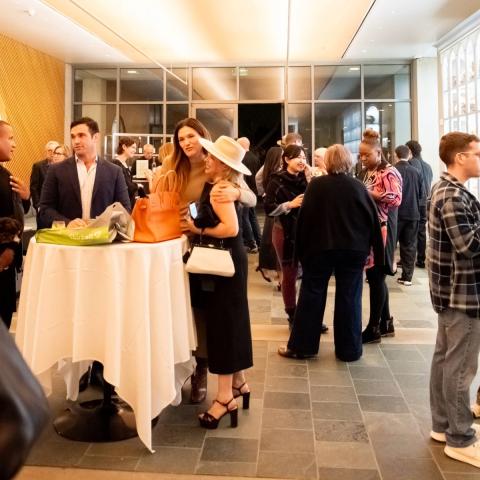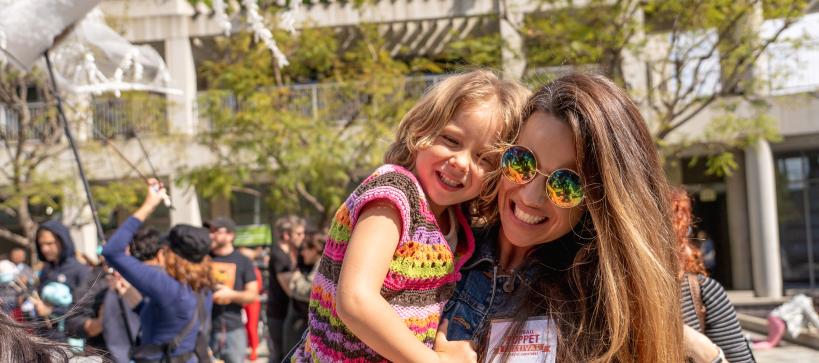Draw Them In, Paint Them Out presents the work of painter Philip Guston (American, b. Canada 1913–1980), the child of Jewish immigrants from Odessa (present-day Ukraine), and Trenton Doyle Hancock (American, b. 1974), a leading Black contemporary artist based in Houston, Texas, in dialogue for the first time. It explores resonant connections between their work and the role that artists play in the pursuit of social justice.
The exhibition features key works by Guston including his now iconic, late satirical Ku Klux Klan paintings in dialogue with major works Hancock created in response to his inspirational mentor, highlighting their parallel thematic explorations of the nature of evil, self-representation, otherness, and art activism. Foregrounding works that depict the Klan, the exhibition demonstrates how both artists engage with and at times even inhabit these hateful figures to explore their own identities and more broadly examine systems of institutionalized power and their feelings of complicity within them. Yet, despite the difficult subject matter and at times violent imagery presented in their work, both Hancock and Guston share an ability to conquer the pain and emotion of their art through humor that is both dark and undeniable, engaging with their shared embrace of the visual language of comics.
Philip Guston, whose early social realist and abstract work ultimately evolved into an idiosyncratic form of social satire, is now one of the most revered painters of the twentieth century. Significant examples of Guston’s buffoonish Klansmen paintings and drawings from the late 1960s and early 1970s, selected by Hancock, will be a centerpiece of the exhibition. Guston’s cartoonish style was used to defy the Klan’s bigotry as racial tensions roiled America—tensions that continue to resonate with renewed urgency today. Guston also used the hooded figure as an alter-ego wrestling with his Jewish identity and his assimilation into American culture.
For the eclectic artist, cartoonist, and illustrator Trenton Doyle Hancock, Guston’s work has been a consistent source of inspiration for nearly thirty years. His collaged psychedelic canvases similarly draw on the language of comics to challenge and comment upon the American condition. The exhibition includes Hancock’s surreal graphic memoir that interweaves Guston’s biography with his own family tree and reports of Klan activity in the United States, past and present. Titled Epidemic! Presents: Step and Screw! (2014), the series has since developed into a substantial body of work in which Hancock’s long-standing avatar, a Black superhero named Torpedoboy, meets and engages with Guston’s Klan-hooded alter-ego. Through this series, Hancock confronts his artistic forefather and examines their respective motivations for grappling with white supremacism in their art.
Please be advised
This exhibition contains explicit language, depictions of violence and lynchings, and reference to suicide. It also includes a video with flashing lights.
